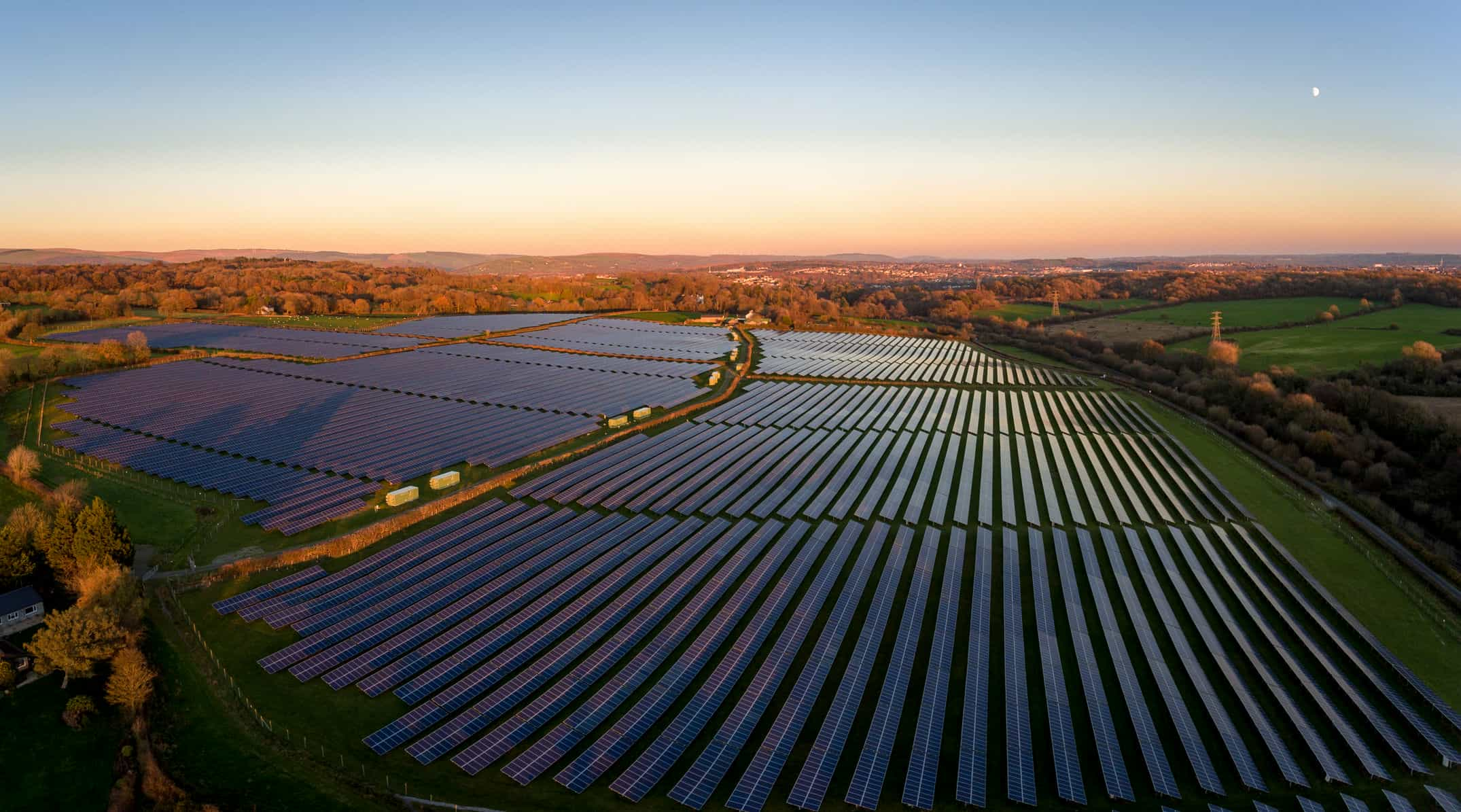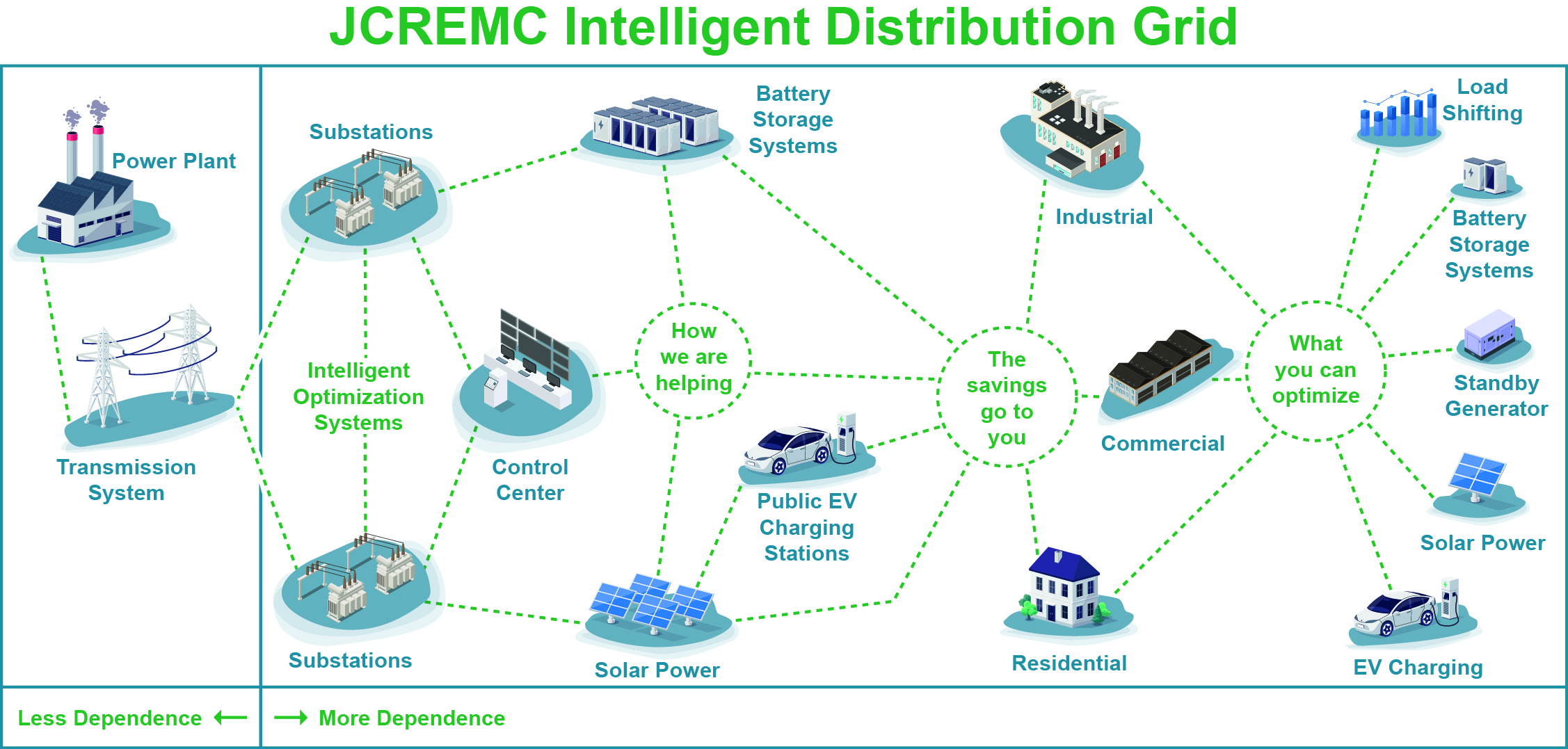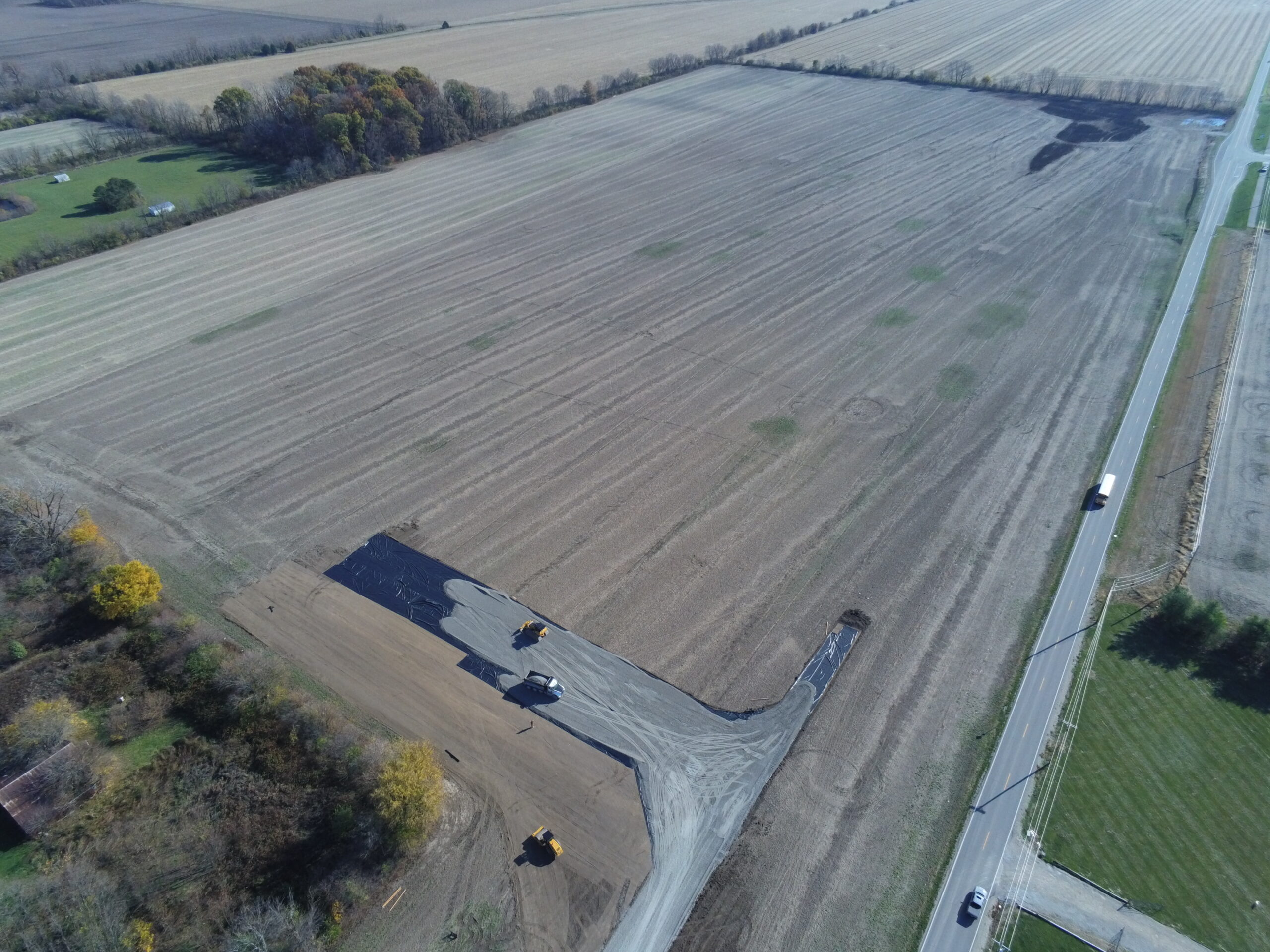Ever-Changing Energy
Electricity production and the means of distributing it has significantly changed over time. Innovations like solar produced electricity and battery energy storage systems (BESS) help enhance the distribution and reliability of electricity resources. JCREMC strives to continually improve our distribution system and remain at the forefront of providing beneficial electricity to our consumers. Below are current projects helping us work toward our innovative goals.

Current Projects
We are working on a new solar array near Whiteland and Tracy Roads. We are also installing a utility-grade battery at this site, to work in conjunction with the solar panels. This new solar array will:
- Have 15,300 panels
- Power approximately +1,000 homes annually
- Span 52 acres, with the panels accounting for 35 of those acres
- Have a lifespan of 25-30 years
Solar arrays are extensive areas filled with solar panels that convert sunlight into electricity, producing large-scale renewable energy. They can provide power to thousands of homes and businesses, offering multiple benefits such as reducing greenhouse gas emissions, lessening dependence on fossil fuels, and lowering electricity costs over time.
Battery energy storage systems (BESS) are devices that store electricity for later use, making power grids more efficient and reliable. BESS helps balance energy supply and demand, supports renewable energy by storing surplus from sources like solar and wind, and provides backup power during outages. This quick release of stored energy aids in stabilizing the grid.
Finished Projects
Our first solar panel installation was completed in 2016 and is located in Trafalgar. We also already have a battery energy storage system in place, located at the Kinder substation.

The image above illustrates our electric grid, and ways that we strive to increase resiliency and control on our grid as a whole. It also showcases ways our members can optimize their share of our grid.
Frequently Asked Questions
How do solar panels work?
All light, including sunlight, generates energy. Usually when light hits an object, the energy turns into heat. But when light hits certain materials, like photovoltaic cells in a solar panel, the energy turns into an electrical current.
Where is the location of the new solar panel array?
We have obtained 50 acres of land between Whiteland Road and Tracy Road. Our new solar array will occupy approximately 35 acres, with a “buffer area” that will include wildflowers and fencing.
When will this happen?
We plan to break ground in January 2025. The new solar array should be operational by summer of 2025.
What is the projected lifespan of this solar array?
The solar arrays have a lifespan of at least 25 years. At that time, the panels could be removed or replaced, leaving the land as good or better than before the panels were installed.
Do solar panels produce noise?
Solar panels are quiet, but the inverters that convert electricity from DC to AC may produce a low hum, similar to a refrigerator.
Do solar panels produce glare?
Solar panels are designed to be minimally reflective to absorb as much sunlight as possible. They are generally less reflective than windows and are approved for installation near airports.
Battery Energy Storage System (BESS)
We are also installing a utility grade battery at the site, to work in conjunction with the solar array. The battery’s primary use, as with our other battery located at the Kinder substation, is for electrical demand reduction. Combining a solar array with a battery helps improve system reliability and energy sustainability.

